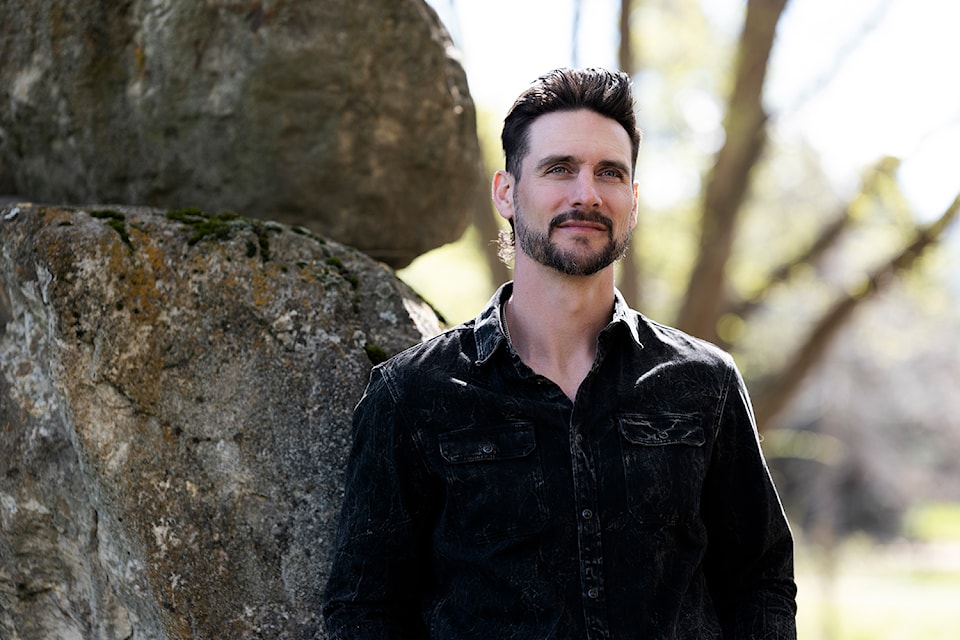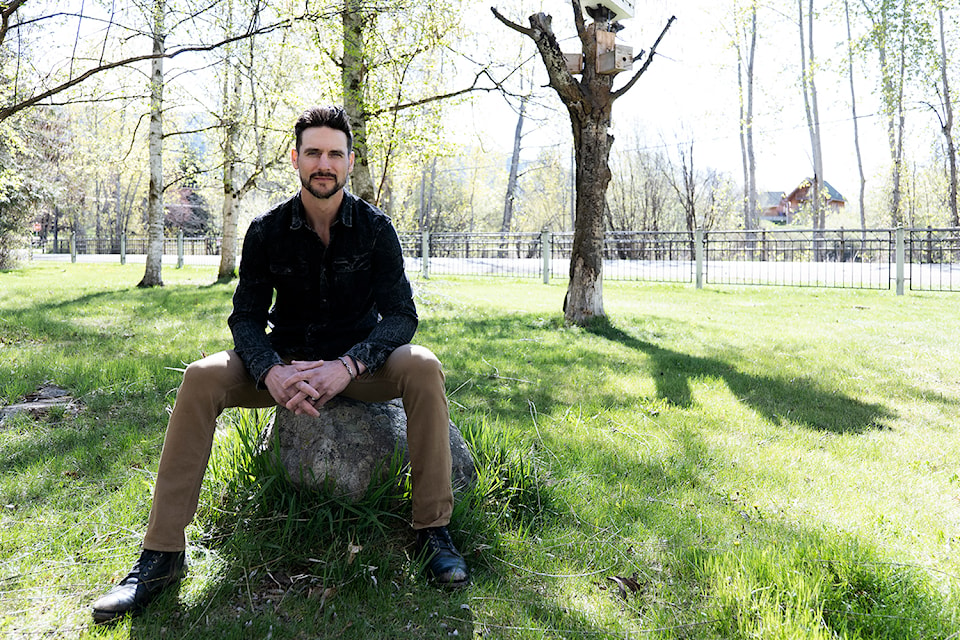s Aaron Volpatti prepared to step onto the ice for his debut as a National Hockey League (NHL) player, he paused, closing his eyes for a moment. It was a scene he had envisioned thousands of times before—the emotions, the sights, the sounds. Only this time, when he reopened his eyes, the image was a reality.
Aaron’s career in the NHL is well documented: three years with the Vancouver Canucks and two with the Washington Capitals before he was forced to retire due to injury. What is lesser known is that he has one of the most inspirational comeback stories in professional sports, one that ultimately led him on the path to where he is today.
Aaron credits his success to three things: hard work, adversity and visualization (or what he calls “cinematic mind mapping”). To better understand his journey and this concept we need to step back to when Aaron was just 19 years old.
It all began with one foolish mistake. In 2005, Revelstoke-local Aaron was making a name for himself as an enforcer playing for the Vernon Vipers of the BC Hockey League (BCHL). However, disaster struck during a team camping trip. Known for his daring antics, Aaron orchestrated what he describes as a “pyro show” with gasoline and fire. However, this time, disaster struck when the bottles broke, soaking his clothes. “I threw my sweater into the fire, unaware of the danger of vapours. It was like lighting a dynamite fuse.”
With his body engulfed in flames, the fight-or-flight response kicked in.
“I just bolted. That was probably the worst thing I could have done because I was pretty fast, and no one could initially catch me. The screams that came from my body on my way to the hospital were sounds I never knew I could make,” he says.
When Aaron woke up in the ICU burn unit at Vancouver General Hospital, it felt as though his world had come crashing down. He’d harboured ambitious dreams—to play National Collegiate Athletic Association (NCAA) hockey, and then pursue a career in sports medicine.
Lying in the hospital bed, with second- and third-degree burns covering 40 per cent of his body, the doctor’s words hit him hard: “He said I wouldn’t be attending hockey camp in three months. On the one hand, I was fortunate to be alive, but on the other, it felt like my dreams had done up in flames,” he reflects.
In that moment, Aaron discovered an unexpected “superpower” of visualization.
“Two weeks into my hospital stay, Mike Vandekamp, my coach from Vernon, informed me a coach from Brown University, an NCAA division college, had been in touch and mentioned they needed a player who could ‘instill fear in the defensemen of the Ivy League,’ a role I excelled at. I reached out to the Brown coach and our conversation left things open-ended. I was overcome with emotion—I had dedicated my life to just having the opportunity to speak with someone like him.”
That’s when a light bulb went on. “I began questioning why I wouldn’t be able to play. There were valid reasons of course, such as the risk of infection and the pain involved. However, I couldn’t accept that simply because it might hurt, I should give up on my dream.”

Despite numerous obstacles, Aaron refused to accept defeat.
“It was then that I discovered the power of visualization. I would vividly imagine my body healing at a cellular level and reframe my relationship with pain. I’d visualize walking out of the hospital doors, feeling the wind on my face. Then, I’d fast-forward to the first game of the season and the feel of the skates on the ice. And the final scene of this mental ‘movie,’ I’d see myself with the letter from Brown in front of me, pen in hand, feeling the flow of my signature on the paper.”
Aaron realized then the importance of the human belief system.
Just six weeks after the accident, he left the hospital. Despite enduring kidney stones shortly after and undergoing an emergency appendectomy, Aaron defied the odds and returned to the ice. Two months into the season, he fulfilled his commitment to Brown University and signed the paper. Through relentless hard work and unwavering belief, his vision had become reality.
Fast-forward to when Aaron was 24, fully healed both physically and mentally, and his coach approached him with a surprising question: had he ever considered playing pro hockey?
“I couldn’t help but laugh,” he recalls. “I had never even entertained the thought. I had no agent, never spoken to a scout, and frankly, I felt like a nobody on one of the weakest college teams.” Yet, his coach saw potential for a solid career in the American Hockey League (AHL) and a shot at the NHL. His words resonated with Aaron, sparking a realization that he may have left some potential untapped by abandoning his visualization practice. That night, he made a promise to himself: he would make it to the NHL “or die trying, just like before.”
This time, he took the visualization process one step further, envisioning his life as a movie where he was the director.
“For the next six months, I poured everything into it. I practically lived at the arena, and when my senior year began, I was gaining attention from every team in the league. I received contract offers from eight teams, and after my senior year, I signed my first professional contract.”
Starting in the AHL, he harboured a burning desire to step onto NHL ice.
“I focused on playing my role as the fighter, biding my time until I received the call-up right before Christmas in 2010.”
From there, everything fell into place, again, just as he had visualized.
However, once again his journey took an unexpected turn when he suffered a neck injury after a hit from behind.
“At that time, the idea of fighting, or even the thought of it, started to weigh on me. We had also lost a few people to suicide and overdose in the hockey world, and CTE [chronic traumatic encephalopathy, a brain disorder likely caused by repeated head injuries] was a big topic of discussion. I’d accumulated quite a few concussions over the years, although they were never officially diagnosed during my playing days.”
Following neck surgery, and with another year left on his contract, the pain and stiffness became unbearable.
“I knew I had to seek medical advice.”
The doctor’s verdict was clear: it wasn’t safe to continue playing. It was a tough pill to swallow, but this time, things were different. At 30 years old, Aaron was thinking about the future, and about starting a family.
“With my burn injury, I could handle the pain, but with my neck, the risk of making things worse was very real.”
That realization marked the end of his career, and the hardest part of that, he says, was the loss of identity.
“I’d been a hockey player—now what? Transitioning from such a regimented lifestyle to the uncertainty of everyday life is hard.” Life after hockey presented other challenges, too. Not only was he dealing with a career transition, but he was also going through a divorce and watching his dad, Tony, battle ALS. “It was a rock-bottom moment,” Aaron reflects.
But like a phoenix rising from the ashes, and with some wise words from his father, he took a leave of absence from his job in wealth management and resumed his visualization practice.
“That’s when another light bulb went off. I had this idea that I wanted to write a book, but it terrified me in terms of being vulnerable and putting my life out there. I put my fears aside and wrote Fighter: Defying the NHL Odds. During that time, I was practicing visualization and realized this is something I needed to share,” he says.
Today, Aaron lives on acreage in Vernon with his wife Michelle and his two boys, and is focused on inspiring people around the world through his life coaching and speaking engagements. His groundbreaking approach of cinematic mind mapping, which not only propelled him to the pinnacle of professional sports but also saved his life, is now transforming the lives of others.
Aaron describes his visualization technique as an elevated form of mental imagery.
“As humans, we often struggle to project empowering thoughts and images, leading to crippling performance anxiety and a loss of confidence. Cinematic mind mapping empowers you to take control of your mental narrative. We can think of visualization as taking a remote and changing the channel on your brain’s big screen TV, therefore changing the trajectory of your life,” he explains.
Aaron’s coaching resonates across all age groups, but he sees its profound impact on younger athletes as especially meaningful.
“Kids today face unprecedented pressures and anxiety. Guiding them from self-doubt to unwavering confidence is transformative. Hearing parents say this practice has transformed their child’s life is immensely rewarding,” he says. “I was once an average hockey player who achieved greatness through belief and a lot of hard work, and I know others can too.”
